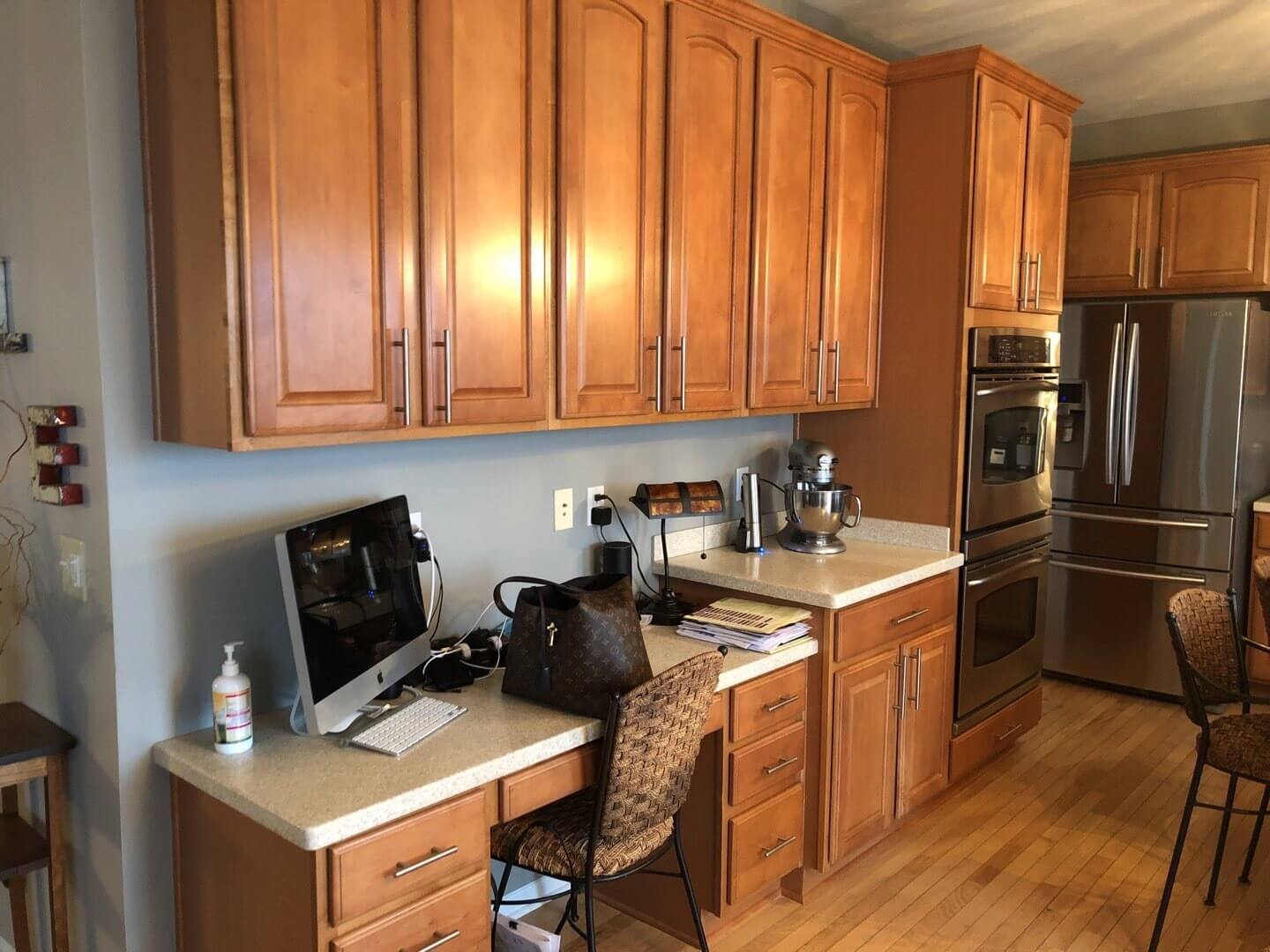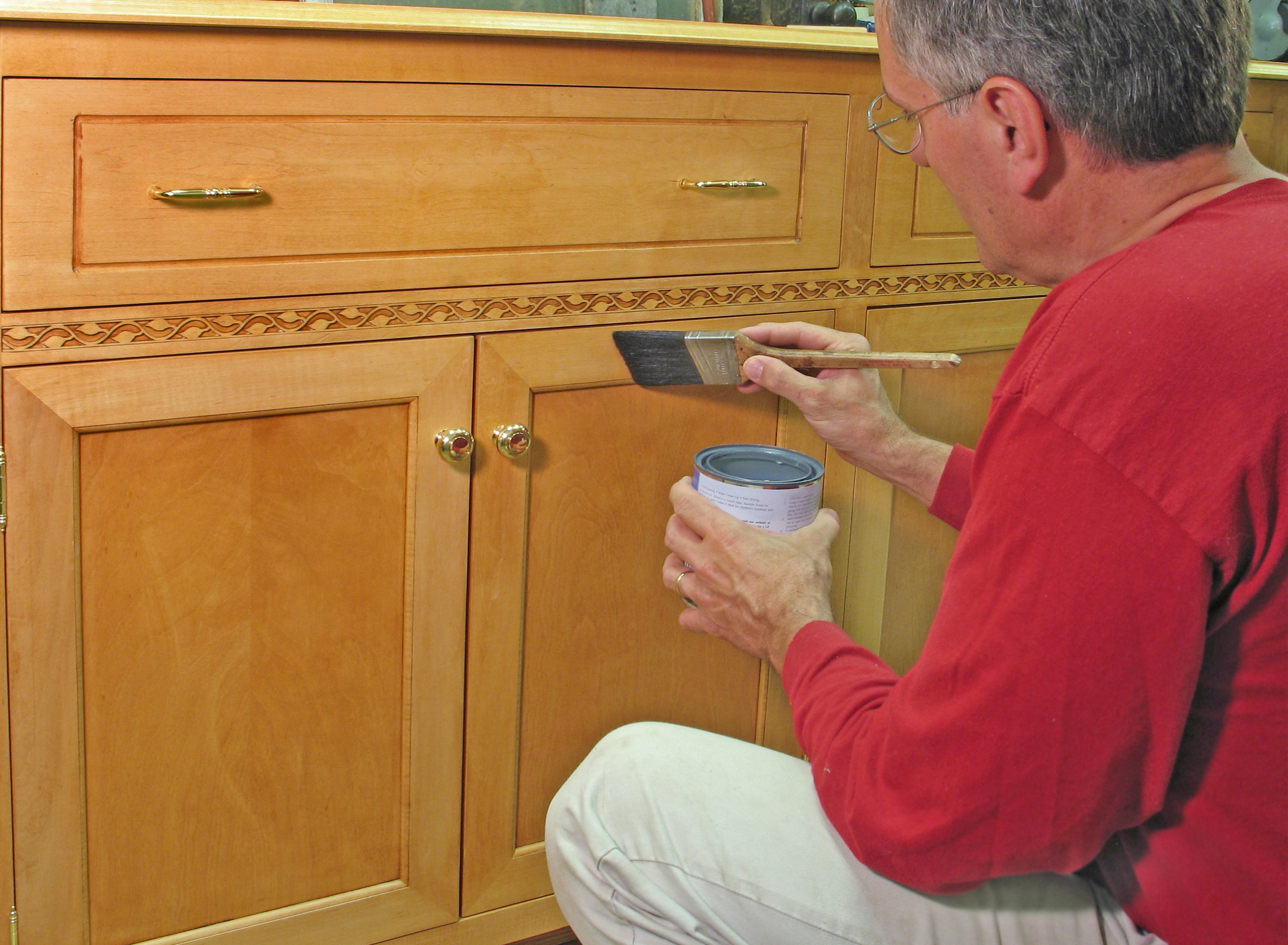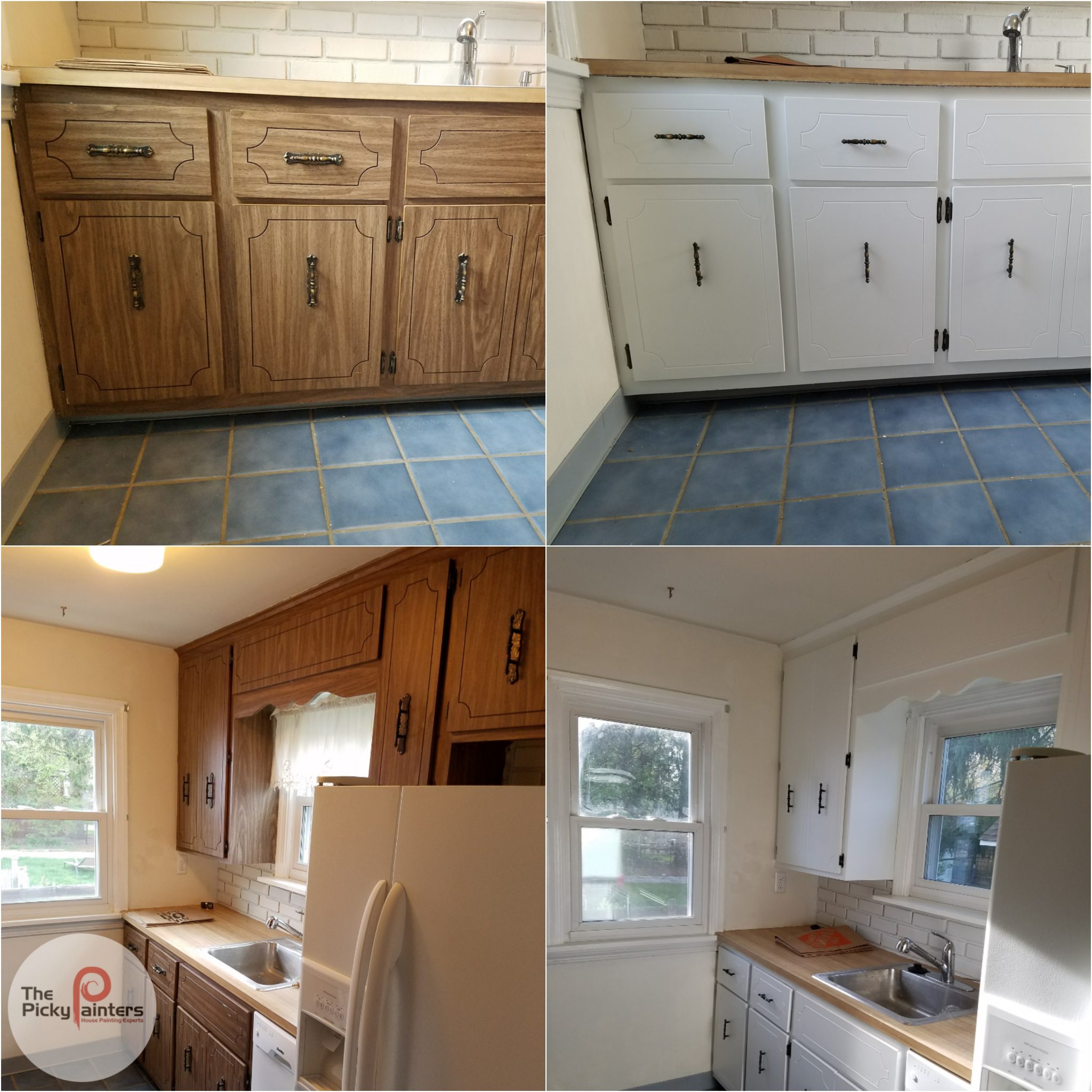Cost Comparison

Renovating a kitchen can significantly impact a home’s value, and the decision between painting existing cabinets or replacing them entirely hinges largely on cost. This analysis compares the financial implications of both options, factoring in various variables to help homeowners make informed decisions.
Cabinet Type, Labor, Materials, and Disposal Costs
The cost of painting or replacing kitchen cabinets varies considerably depending on several factors. Cabinet type plays a crucial role; solid wood cabinets, for instance, typically require more extensive preparation and potentially more expensive paint, increasing the overall cost of painting. Similarly, the complexity of the cabinet design – intricate carvings or extensive detailing – will impact both painting and replacement costs. Labor costs are also significant; experienced professionals command higher rates, influencing the overall expense. Material costs, encompassing paint, primer, new cabinet doors and boxes (for replacement), and hardware, fluctuate based on quality and brand. Finally, disposal fees for old cabinets must be considered, adding to the overall replacement expense.
| Cabinet Type | Painting Cost (USD) | Replacement Cost (USD) | Cost Difference (USD) |
|---|---|---|---|
| Standard MDF | $1,500 – $3,000 | $5,000 – $15,000 | $2,000 – $12,000 |
| Solid Wood | $2,500 – $5,000 | $10,000 – $30,000+ | $5,000 – $25,000+ |
| Custom Cabinets | $4,000 – $8,000+ | $20,000 – $50,000+ | $12,000 – $42,000+ |
Note: These cost ranges are estimates and can vary significantly based on geographic location, project scope, and material choices. Prices are inclusive of labor and materials but exclude permits and unforeseen complications.
Long-Term Cost Implications
Painting cabinets offers lower upfront costs, but long-term maintenance may be necessary. Chips, scratches, and fading require touch-ups or repainting, adding incremental expenses over time. Replacement, while more expensive initially, offers a longer lifespan with less frequent maintenance, potentially saving money in the long run.
Painting is more cost-effective when dealing with relatively new cabinets in good condition, requiring only a cosmetic refresh. Replacement becomes more beneficial when cabinets are severely damaged, outdated, or structurally unsound, necessitating complete overhaul. For example, cabinets with significant water damage or structural issues are better candidates for replacement rather than a costly, temporary paint job.
Return on Investment (ROI), Painting cabinets vs replacing
The ROI of painting versus replacing cabinets is influenced by various factors, including the overall condition of the kitchen, the quality of materials used, and the local real estate market.
- Painting: A well-executed paint job can significantly enhance the kitchen’s aesthetic appeal, increasing its perceived value. However, the ROI is typically lower compared to a complete cabinet replacement, as the upgrade is less substantial. A successful paint job might add a few percentage points to the resale value, especially in a competitive market.
- Replacement: New cabinets represent a more substantial upgrade, offering a higher potential ROI. High-end, custom cabinets can significantly increase a home’s value, particularly in high-end markets. However, the initial investment is much larger, and the return may not fully offset the initial cost in all cases. For example, a complete cabinet replacement in a fixer-upper property may yield a higher ROI than in a luxury home already boasting high-end features.
Aesthetic Considerations: Painting Cabinets Vs Replacing

Repurposing existing kitchen cabinets through painting offers a compelling alternative to full replacement, presenting a nuanced balance of aesthetic benefits and limitations. While new cabinets provide a blank canvas for complete design overhaul, painting allows for a more budget-friendly and potentially less disruptive transformation, retaining the existing structure and potentially adding character.
Painting existing cabinets offers a surprisingly versatile approach to kitchen aesthetics. The process can revitalize outdated styles, seamlessly integrating them into a modern design scheme. By carefully selecting paint colors and finishes, homeowners can dramatically alter the perceived age and style of their cabinets, creating a fresh and updated look without the expense and disruption of a full replacement. This approach allows for a more subtle or dramatic transformation depending on the desired aesthetic.
Cabinet Style and Finish Options
The range of aesthetic outcomes achievable through painting versus replacement differs significantly. Replacement allows for access to a virtually limitless array of cabinet styles, materials (wood types, laminates, thermofoil), and pre-finished colors. Painting, however, offers a more limited palette, constrained by the existing cabinet material and its suitability for paint adhesion. Nevertheless, painting can achieve a surprising variety of finishes, from sleek, modern matte to classic high-gloss, using various paint types and techniques. For example, a shaker-style cabinet, originally finished in a dated oak veneer, can be transformed into a contemporary look with a clean, white matte paint finish and updated brushed nickel hardware. Conversely, a plain slab-door cabinet could be painted a bold, saturated color to create a dramatic focal point in a minimalist kitchen. The choice of hardware further amplifies this versatility; antique brass pulls can imbue a painted cabinet with a vintage charm, while sleek, minimalist bar pulls contribute to a modern aesthetic.
Visual Comparison: Painted vs. Replaced Cabinets
Imagine two identical kitchens, differing only in their cabinetry. In the first, the cabinets are original, solid oak, painted a crisp, creamy white. The matte finish subtly reflects the light, creating a soft, airy ambiance. Updated brushed nickel hardware adds a contemporary touch, complementing the clean lines of the cabinetry. The overall aesthetic is one of understated elegance, blending seamlessly with modern appliances and countertops. In contrast, the second kitchen features brand-new, custom-designed cabinets in a rich, dark walnut stain. These cabinets have a more elaborate design, with raised panel doors and intricate detailing. The dark wood creates a warm, sophisticated atmosphere, lending a more traditional feel to the space. The hardware, polished brass, complements the rich wood tone, creating a sense of luxury and timeless appeal. While both kitchens are visually appealing, they offer distinctly different stylistic approaches, showcasing the diverse possibilities of both painting and replacement. The painted cabinets provide a fresh, updated look while retaining a sense of warmth and character, while the replaced cabinets offer a complete stylistic overhaul, emphasizing luxury and a more defined design aesthetic.
Practical Aspects

Painting or replacing kitchen cabinets presents a significant time commitment and requires differing levels of effort. The durability of each option also varies considerably, impacting the long-term cost-effectiveness of the project. A careful evaluation of these practical aspects is crucial for making an informed decision.
The time and effort required for each process differ substantially. Painting involves a multi-stage process, from meticulous preparation to multiple coats of paint and ample drying time. Cabinet replacement, conversely, demands a more intense, shorter burst of work, involving demolition, precise measurements, installation, and potentially some minor adjustments.
Project Timelines
The following table provides a comparative timeline for painting versus replacing kitchen cabinets, assuming a standard-sized kitchen and average DIY skills. Professional installation times may vary.
| Task | Painting Cabinets (DIY) | Replacing Cabinets (DIY) |
|---|---|---|
| Preparation (cleaning, sanding, priming) | 2-3 days | 1 day |
| Application (painting) | 2-3 days (allowing for drying time) | N/A |
| Installation | N/A | 2-3 days |
| Total Estimated Time | 4-7 days | 3-4 days |
Durability and Longevity
The longevity of painted cabinets versus replaced cabinets depends heavily on the materials and techniques used. High-quality paints, such as those specifically formulated for kitchen cabinets (e.g., epoxy paints or two-part urethane paints), offer superior durability and resistance to moisture, scratches, and chipping, potentially lasting for 10-15 years or more with proper care. Conversely, lower-quality paints might require repainting within 5-7 years.
Replacing cabinets, especially with high-quality materials like solid wood or durable laminate, provides a significantly longer lifespan, often exceeding 20 years. The durability of the replacement cabinets will, however, depend on the quality of the materials and the construction. For instance, solid wood cabinets, while more expensive initially, offer superior durability and longevity compared to particleboard cabinets. A poorly constructed cabinet, regardless of the material, will have a shorter lifespan. Consider the cabinet’s construction, such as the use of dovetail joints versus simpler butt joints, as an indicator of its overall robustness and expected lifespan. Examples of durable paints include Benjamin Moore Advance and Sherwin-Williams Emerald Urethane Alkyd Enamel, both known for their hardness and resistance to wear and tear.
